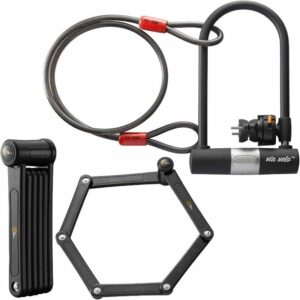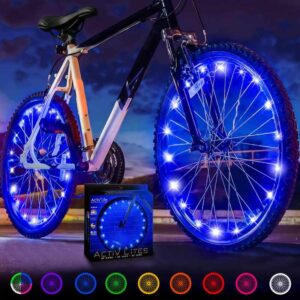Essential Tips Before Purchasing An E-Bike: Key Considerations Before Your Purchase
Key Takeaways
-
Understand Your Needs: Identify the primary use of your electric bike, whether for commuting, mountain biking, or leisure, to select a model that best fits your lifestyle.
-
Budget Wisely: Electric bikes come in various price ranges; setting a budget can help you navigate the options without overspending.
-
Battery and Range: Consider the battery life and range to ensure it meets your daily requirements for distance without frequent recharging.
-
Test Ride: Always take a test ride to assess the bike’s comfort, handling, and performance. This experience can be pivotal in your decision-making process.
-
Motor Type Matters: Familiarize yourself with the different motor types (hub vs. mid-drive) and their impact on your riding experience.
-
Quality Over Quantity: Invest in an electric bike with durable components and a reliable warranty, prioritizing long-term value over initial cost.
Elevate Your Ride: Navigating the World of Electric Bikes
Embarking on the journey to purchase an e-bike opens up a realm of excitement, innovation, and a myriad of choices. This comprehensive guide is designed to arm you with the crucial insights and considerations needed to navigate the e-bike landscape confidently. Perfect for both enthusiasts and newcomers, we’ll explore vital factors including the e-bike’s purpose, budget considerations, performance capabilities, and legal stipulations. Furthermore, we acknowledge the significance of embracing green transportation solutions, highlighting how your decision contributes to a more sustainable future. Prepare to lay the foundation for a well-informed purchase, ensuring your transition to an ideal e-bike is as smooth and rewarding as possible.
Key Electric Bike Features and Considerations
When diving into the world of e-bikes, understanding key product features and making informed considerations is paramount. This section will guide you through the essential aspects to consider, ensuring you find the e-bike that perfectly aligns with your needs and preferences.
Purpose and Usage:
Choosing the right e-bike requires understanding how intended usage influences the type of bike you should select, with each design catering to specific needs and environments. For urban commuters, an e-bike designed for city travel often features a sturdy frame, pedal assist, moderate power for ease of navigation in traffic, and accessories like lights and fenders for safety and convenience. One should also take into consideration the frame style, is it a ‘Step Through’ or ‘Step Over’, is it light and is it a folding e-bike for versatility? On the other hand, e-bikes built for off-road adventures prioritize power and durability; they’re equipped with higher-wattage motors and rugged frames capable of handling uneven terrains and trails. Leisure riders or those with limited storage space might lean towards foldable e-bikes, which offer the convenience of easy transport and storage without sacrificing performance. Cargo e-bikes represent another category, designed for those who need to transport goods, featuring reinforced frames and enhanced motor support to handle additional weight. Ultimately, aligning the bike’s features with your intended use ensures an enjoyable and efficient riding experience, whether for daily commuting, weekend exploring, or carrying loads.
convenience. One should also take into consideration the frame style, is it a ‘Step Through’ or ‘Step Over’, is it light and is it a folding e-bike for versatility? On the other hand, e-bikes built for off-road adventures prioritize power and durability; they’re equipped with higher-wattage motors and rugged frames capable of handling uneven terrains and trails. Leisure riders or those with limited storage space might lean towards foldable e-bikes, which offer the convenience of easy transport and storage without sacrificing performance. Cargo e-bikes represent another category, designed for those who need to transport goods, featuring reinforced frames and enhanced motor support to handle additional weight. Ultimately, aligning the bike’s features with your intended use ensures an enjoyable and efficient riding experience, whether for daily commuting, weekend exploring, or carrying loads.
Budget
When considering the budget for an electric bike, it’s essential to look beyond the sticker price. The initial cost is just one factor; ownership expenses such as maintenance, battery replacement, and potential accessory upgrades contribute to the total investment. Higher-end e-bikes, while more costly upfront, often boast superior build quality, leading to lower maintenance costs and longer intervals between replacements. In contrast, budget-friendly models may require more frequent servicing and sooner-than-expected part replacements, potentially elevating long-term costs. Additionally, consider the warranty and service packages the manufacturer offers, as these can significantly affect future expenses. Buying an electric bike that aligns with your financial capabilities and cycling needs means balancing upfront costs with anticipated maintenance and operational expenses, ensuring a wise long-term investment in your cycling journey.
Battery Life and Range

The battery is the heart of an e-bike, dictating how far you can ride on a single charge. E-bikes with a longer range are crucial for riders planning longer commutes or extensive trail rides, ensuring that the journey doesn’t end prematurely. Look for a battery with a high watt-hour (Wh) rating for extended range, but remember that battery life can be influenced by factors such as rider weight, terrain, and riding style. Modern e-bikes come with batteries that offer ranges upwards of 50 miles, but always consider your personal needs. Balancing battery capacity with the bike’s weight and cost is essential, as higher capacity batteries can increase both.
Gear, metal or electrical bike wheel in city transportation, future clean energy or sustainability cycling travel. Zoom, ebike or eco friendly bicycle and equipment, part or electricity battery motor.
Motor Type and Power
E-bike motors significantly influence the bike’s performance, with the main types being hub motors and mid-drive motors. Hub motors are often found in budget-friendly models and are great for flat terrains, offering a smooth ride. Mid-drive motors, located in the bike’s center, provide a balanced, natural riding feel and better efficiency for hilly terrains. Power, measured in watts, affects the bike’s ability to climb hills and reach higher speeds. Consider the legal restrictions in your area, as some places limit motor power for e-bikes on public roads.
Frame Material and Design
The frame impacts an e-bike’s durability, weight, and ride quality. Aluminum frames are common, offering a balance between weight and cost, while carbon fiber or titanium frames, though more expensive, provide weight savings and increased strength. The design also affects the riding experience; step-through frames offer easy mounting and are ideal for city commuters or riders with mobility issues. The choice of frame material and design should reflect your usage priorities, whether it’s for rugged off-road riding or sleek, urban commuting.
Tires and Suspension
Tires and suspension systems play a critical role in comfort and traction. For urban e-bikes, puncture-resistant tires with good grip are essential for navigating city streets, while mountain e-bikes benefit from wider tires with aggressive tread patterns for off-road conditions. Suspension, either in the front fork, rear, or both, absorbs impacts, making rides smoother over rough terrains. Consider your typical riding surfaces and choose accordingly; a well-chosen tire and suspension setup can dramatically improve your e-bike experience.
Gears and Braking System
E-bikes come with various gearing options, from single-speed models suited for flat terrains to multi-gear setups for hilly landscapes, offering flexibility in how you ride. The type of brakes—mechanical disc brakes or hydraulic disc brakes—also affects performance. Hydraulic brakes provide more stopping power and are better suited for high-speed e-biking and challenging terrains. Your riding conditions should dictate your choice here, emphasizing safety and control in your e-bike’s gear and braking system.

Additional Features
Modern e-bikes boast a range of additional features enhancing convenience, safety, and enjoyment. Integrated lighting for night riding, GPS for navigation, theft-prevention mechanisms like immobilizers, and even smart connectivity for ride tracking and diagnostics can be found on today’s models. While not essential for all riders, these features can significantly enhance your riding experience based on your personal preferences and riding habits.
Pros
-
Eco-Friendly Transportation: E-bikes offer a green alternative to fossil fuel-dependent vehicles, significantly reducing carbon footprint and promoting sustainable urban mobility.
-
Enhanced Mobility: With the assistance of a motor, riders can cover longer distances and tackle challenging terrains more easily, making e-biking accessible to a wider range of people, including those who might find traditional biking too demanding.
-
Cost Efficiency: Compared to cars and public transportation, e-bikes have lower operating costs, including maintenance and charging expenses, offering an economical mode of transportation over time.
-
Health Benefits: Riding an e-bike still requires physical effort, especially on lower assistance settings, providing cardiovascular benefits and promoting overall physical health.
-
Traffic Avoidance: E-bikes enable riders to bypass congested roads using bike lanes, reducing commute times and improving the overall cycling experience in urban settings.
Cons
-
Initial Investment: High-quality e-bikes come with a significant upfront cost, which can be a barrier for some potential buyers.
-
Maintenance and Repair Complexity: E-bikes involve more complex components than traditional bikes, such as electric motors and battery systems, potentially leading to higher maintenance costs and the need for specialized repair services.
-
Heavier than Traditional Bikes: The added weight of the motor and battery makes e-bikes heavier, which can affect handling and transportation when the motor is not in use, such as carrying the bike upstairs or loading it onto a bike rack.
Suitability
When considering the purchase of an e-bike, understanding its suitability for your specific needs is crucial. E-bikes are designed to cater to a broad spectrum of users, from urban commuters to outdoor adventurers, making it essential to choose a model that aligns with your lifestyle and riding preferences.
For Urban Commuters:
Lightweight e-bikes with foldable frames are ideal for those needing to combine cycling with public transport or have limited storage space. Features like integrated lights and lockable battery packs offer convenience and security for city living.

For Outdoor Enthusiasts:
Riders aiming for off-road trails or mountain biking should look for e-bikes with robust suspension systems, durable tires, and powerful motors that can handle steep inclines and rugged terrains. The suitability of an e-bike for outdoor adventures often hinges on its ability to provide sustained power and comfort over long distances.
For Casual Riders:
Those interested in leisurely rides around the neighborhood or local parks might prioritize comfort and ease of use. E-bikes with step-through frames, comfortable seating, and lower top speeds can offer a more relaxed riding experience.
Considering Physical Limitations:
E-bikes are also particularly suitable for individuals with physical limitations or older riders, as the pedal-assist feature can alleviate strain on knees and joints, making cycling accessible and enjoyable again.
In each case, the suitability of an e-bike is determined by a combination of its design features, performance capabilities, and how well it matches the rider’s intended use, physical requirements, and personal preferences. Whether it’s for commuting, exploring, or improving fitness levels, there’s an e-bike out there that’s the perfect fit for your lifestyle.

Your Next Journey Awaits: Embrace the E-Bike Revolution
In wrapping up this comprehensive guide, we’ve journeyed through the essential aspects of selecting the perfect e-bike to match your lifestyle, needs, and budget. With insights into the pivotal factors from purpose and usage to budget considerations and beyond, we aim to empower you with the knowledge needed to make an informed choice when at the local bike shop. As the world of e-bikes continues to evolve, embracing this eco-friendly, efficient, and enjoyable mode of transportation opens up a new horizon of possibilities. We invite you to explore more articles on our site and delve into our detailed e-bike reviews. Your perfect ride awaits, and the path to discovering it is just a pedal away.







